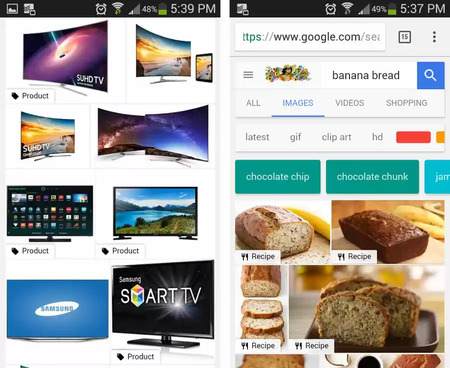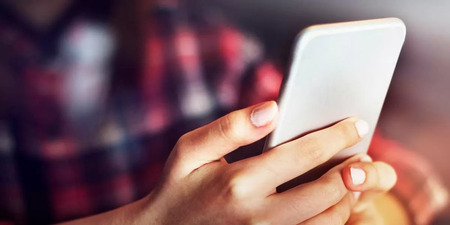Google has recently announced that they have added a new Google image badge to their mobile image search results. These badges will provide users with greater insight into the type of content linked to the image. This will hopefully help generate higher quality traffic for sites and help users find the information they seek faster.
In the digital marketing industry, we have known for some time the power that images can have. When people consume content on their screens, they pay attention to the images on the page. Eye tracking studies have examined where people spend the most time looking. The studies found that, in some cases, consumers even spend more time looking at information-rich images than reading the text on the page. On social media, images also dominate. Infographics receive three times as many likes and shares than other types of content.
On social media, images also dominate. Infographics receive three times as many likes and shares than other types of content.
Follow Google Image Guidelines
Facebook posts with images and Twitter posts with images also greatly outpace their counterparts without. It is clear that customers, and their brains, like images. People can even process images over 60,000 times faster than text. When people simply hear information, they generally remember only 10% of it just three days later. When that information has been paired with relevant images, however, the retention of the audience will jump up to an average of 65%.
When it comes to your SEO, therefore, images shouldn't be neglected. When your images appear in the Google results, - you have the chance to draw traffic. Traffic from the image results tends to be relatively strong, with 63% of clicks made on images turning into site traffic. The problem that sometimes arises for these sites is the quality of this traffic. The new Google image badge may be the solution that addresses this problem. Mobile is driving the majority of traffic online. Understand what this means on the SERP and how it impacts you.
Google’s new image badges
Google made an announcement on August 1 that it added badges to the images that appear in mobile image searches. These simple badges let the user know the type of content they will find on your website when they click through from the SERP. Currently Google has badges for recipes, videos, products, and GIFs, but it has left open the question about whether they will develop more badges in the future.  Here is part of Google’s official announcement:
Here is part of Google’s official announcement:
When you want to bake cupcakes, but you don't know what kind, Image Search can help you make a decision. Finding an image with a recipe can be challenging: you might end up on a page that has only pictures of these delicious things, or a cupcake fan site that doesn't have recipes, but everything else about them. To help users find exactly what they want, Image Search on mobile devices now includes relevant badges on the thumbnails. Currently we have badges for recipes, videos, products, and animated images (GIFs).
How do I take advantage of the Google image badge?
Google said in its announcement that site owners who want to take advantage of this new feature will need to make sure their content has the appropriate schema markup. For example, if you have a recipe page, you will want to make sure your page has the recipe schema. This will provide Google with the information they need so the algorithm appropriately adds the ‘recipe’ badge to any images that appear from your site. You will also find the needed markups for products and videos on the schema website. After you have marked up your content, you will want to use the Google Structured Data Testing Tool to make sure that your content has the correct markings. If your image can bring you valuable traffic, you do not want your image to be the one in the search results without the badge. Customers will quickly realize that these badges let them know what they will see when they click. Sites that do not have a badge, therefore, will likely get overlooked when customers seek a particular type of information.
Should you pay attention to Google's algorithm updates? Learn more today.
Of course, as you implement these changes, you should carefully track your progress. On Google Webmaster Tools, you can filter your search traffic specifically by image searches. This will allow you to see how much of your traffic arrives from your images, which can then boost your insight into the success of your efforts. You can also employ a page view tracker on a platform, like BrightEdge, to look at the rankings and visitors for the pages you have marked up with schema for the Google Image Badge. See if there are changes in traffic rates, bounce rates, and dwell time.

Google continues to modify their algorithm and SERP to better serve the needs of their end users. As site owners, we need to understand these changes and see how they can be used to maximize the presence of the brand online. The more we align ourselves with Google’s concept of the ideal user experience while also taking advantage of these opportunities when they arise, the easier it will be to build a strong digital brand presence.

